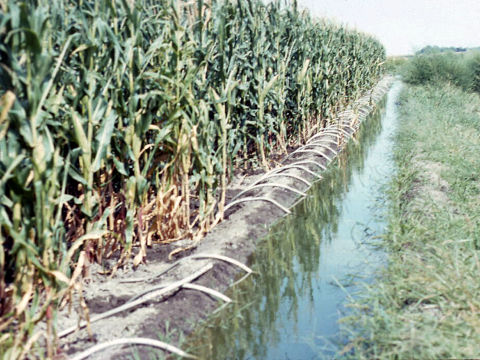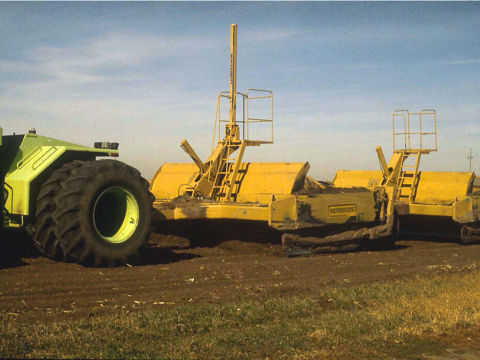10.1: Introduction
- Page ID
- 44612
\( \newcommand{\vecs}[1]{\overset { \scriptstyle \rightharpoonup} {\mathbf{#1}} } \)
\( \newcommand{\vecd}[1]{\overset{-\!-\!\rightharpoonup}{\vphantom{a}\smash {#1}}} \)
\( \newcommand{\dsum}{\displaystyle\sum\limits} \)
\( \newcommand{\dint}{\displaystyle\int\limits} \)
\( \newcommand{\dlim}{\displaystyle\lim\limits} \)
\( \newcommand{\id}{\mathrm{id}}\) \( \newcommand{\Span}{\mathrm{span}}\)
( \newcommand{\kernel}{\mathrm{null}\,}\) \( \newcommand{\range}{\mathrm{range}\,}\)
\( \newcommand{\RealPart}{\mathrm{Re}}\) \( \newcommand{\ImaginaryPart}{\mathrm{Im}}\)
\( \newcommand{\Argument}{\mathrm{Arg}}\) \( \newcommand{\norm}[1]{\| #1 \|}\)
\( \newcommand{\inner}[2]{\langle #1, #2 \rangle}\)
\( \newcommand{\Span}{\mathrm{span}}\)
\( \newcommand{\id}{\mathrm{id}}\)
\( \newcommand{\Span}{\mathrm{span}}\)
\( \newcommand{\kernel}{\mathrm{null}\,}\)
\( \newcommand{\range}{\mathrm{range}\,}\)
\( \newcommand{\RealPart}{\mathrm{Re}}\)
\( \newcommand{\ImaginaryPart}{\mathrm{Im}}\)
\( \newcommand{\Argument}{\mathrm{Arg}}\)
\( \newcommand{\norm}[1]{\| #1 \|}\)
\( \newcommand{\inner}[2]{\langle #1, #2 \rangle}\)
\( \newcommand{\Span}{\mathrm{span}}\) \( \newcommand{\AA}{\unicode[.8,0]{x212B}}\)
\( \newcommand{\vectorA}[1]{\vec{#1}} % arrow\)
\( \newcommand{\vectorAt}[1]{\vec{\text{#1}}} % arrow\)
\( \newcommand{\vectorB}[1]{\overset { \scriptstyle \rightharpoonup} {\mathbf{#1}} } \)
\( \newcommand{\vectorC}[1]{\textbf{#1}} \)
\( \newcommand{\vectorD}[1]{\overrightarrow{#1}} \)
\( \newcommand{\vectorDt}[1]{\overrightarrow{\text{#1}}} \)
\( \newcommand{\vectE}[1]{\overset{-\!-\!\rightharpoonup}{\vphantom{a}\smash{\mathbf {#1}}}} \)
\( \newcommand{\vecs}[1]{\overset { \scriptstyle \rightharpoonup} {\mathbf{#1}} } \)
\( \newcommand{\vecd}[1]{\overset{-\!-\!\rightharpoonup}{\vphantom{a}\smash {#1}}} \)
\(\newcommand{\avec}{\mathbf a}\) \(\newcommand{\bvec}{\mathbf b}\) \(\newcommand{\cvec}{\mathbf c}\) \(\newcommand{\dvec}{\mathbf d}\) \(\newcommand{\dtil}{\widetilde{\mathbf d}}\) \(\newcommand{\evec}{\mathbf e}\) \(\newcommand{\fvec}{\mathbf f}\) \(\newcommand{\nvec}{\mathbf n}\) \(\newcommand{\pvec}{\mathbf p}\) \(\newcommand{\qvec}{\mathbf q}\) \(\newcommand{\svec}{\mathbf s}\) \(\newcommand{\tvec}{\mathbf t}\) \(\newcommand{\uvec}{\mathbf u}\) \(\newcommand{\vvec}{\mathbf v}\) \(\newcommand{\wvec}{\mathbf w}\) \(\newcommand{\xvec}{\mathbf x}\) \(\newcommand{\yvec}{\mathbf y}\) \(\newcommand{\zvec}{\mathbf z}\) \(\newcommand{\rvec}{\mathbf r}\) \(\newcommand{\mvec}{\mathbf m}\) \(\newcommand{\zerovec}{\mathbf 0}\) \(\newcommand{\onevec}{\mathbf 1}\) \(\newcommand{\real}{\mathbb R}\) \(\newcommand{\twovec}[2]{\left[\begin{array}{r}#1 \\ #2 \end{array}\right]}\) \(\newcommand{\ctwovec}[2]{\left[\begin{array}{c}#1 \\ #2 \end{array}\right]}\) \(\newcommand{\threevec}[3]{\left[\begin{array}{r}#1 \\ #2 \\ #3 \end{array}\right]}\) \(\newcommand{\cthreevec}[3]{\left[\begin{array}{c}#1 \\ #2 \\ #3 \end{array}\right]}\) \(\newcommand{\fourvec}[4]{\left[\begin{array}{r}#1 \\ #2 \\ #3 \\ #4 \end{array}\right]}\) \(\newcommand{\cfourvec}[4]{\left[\begin{array}{c}#1 \\ #2 \\ #3 \\ #4 \end{array}\right]}\) \(\newcommand{\fivevec}[5]{\left[\begin{array}{r}#1 \\ #2 \\ #3 \\ #4 \\ #5 \\ \end{array}\right]}\) \(\newcommand{\cfivevec}[5]{\left[\begin{array}{c}#1 \\ #2 \\ #3 \\ #4 \\ #5 \\ \end{array}\right]}\) \(\newcommand{\mattwo}[4]{\left[\begin{array}{rr}#1 \amp #2 \\ #3 \amp #4 \\ \end{array}\right]}\) \(\newcommand{\laspan}[1]{\text{Span}\{#1\}}\) \(\newcommand{\bcal}{\cal B}\) \(\newcommand{\ccal}{\cal C}\) \(\newcommand{\scal}{\cal S}\) \(\newcommand{\wcal}{\cal W}\) \(\newcommand{\ecal}{\cal E}\) \(\newcommand{\coords}[2]{\left\{#1\right\}_{#2}}\) \(\newcommand{\gray}[1]{\color{gray}{#1}}\) \(\newcommand{\lgray}[1]{\color{lightgray}{#1}}\) \(\newcommand{\rank}{\operatorname{rank}}\) \(\newcommand{\row}{\text{Row}}\) \(\newcommand{\col}{\text{Col}}\) \(\renewcommand{\row}{\text{Row}}\) \(\newcommand{\nul}{\text{Nul}}\) \(\newcommand{\var}{\text{Var}}\) \(\newcommand{\corr}{\text{corr}}\) \(\newcommand{\len}[1]{\left|#1\right|}\) \(\newcommand{\bbar}{\overline{\bvec}}\) \(\newcommand{\bhat}{\widehat{\bvec}}\) \(\newcommand{\bperp}{\bvec^\perp}\) \(\newcommand{\xhat}{\widehat{\xvec}}\) \(\newcommand{\vhat}{\widehat{\vvec}}\) \(\newcommand{\uhat}{\widehat{\uvec}}\) \(\newcommand{\what}{\widehat{\wvec}}\) \(\newcommand{\Sighat}{\widehat{\Sigma}}\) \(\newcommand{\lt}{<}\) \(\newcommand{\gt}{>}\) \(\newcommand{\amp}{&}\) \(\definecolor{fillinmathshade}{gray}{0.9}\)Surface irrigation is the oldest irrigation application method in the world. In fact, according to Price and Purcell (2011), the practice was used as early as 6000 years ago in Mesopotamia. Approximately 84% of the world’s irrigation (FAO, 2021) and 35–45% of the U.S. irrigation uses the surface method (FAO, 2021 and USDA, 2019). Surface irrigation includes border, furrow, and basin irrigation (Figure 10.1). Surface irrigation requires less pressure than does sprinkler or microsystems. In addition, worldwide, water is commonly furnished to the surface irrigated field using only gravity to deliver and distribute the water; pumping is not required. In the U.S. Midwest, much of the water for surface irrigation is pumped from groundwater and the primary energy cost using surface irrigation is due to lifting the water to the soil surface. If the topography of the land is such that surface irrigation is possible with only moderate leveling, surface irrigation may be less expensive than other methods.
Figure 10.1. (a) Gated pipe furrow irrigation, (b) large-scale basin irrigation, (c) small-scale basin irrigation, and (d) border irrigation (photo d courtesy of Jan Feyen, KU Leuven, Belgium).
(a) (b)
(b)
(c) (d)
(d)
In all surface irrigation systems, water is applied at the inlet end and the water then flows to the downstream end. A portion of the water infiltrates as it advances across the field. Water is usually applied through gated pipes, siphons, or gates as shown in Figure 10.2.
Figure 10.2. Water application in surface irrigation: (a) gated pipe, (b) siphons.
(a) (b)
(b)
Surface irrigation can be an efficient application method if the soils and fields are well suited to this method. But, it can be very inefficient if the soils and other factors are not properly considered when developing and managing the system. The soil infiltration rate is especially critical in the efficient operation of surface irrigation systems. If the infiltration rate of the soil is too high, the depth of water that infiltrates near the inlet will be much larger than that at the last point to receive water, the downstream end. The land slope and its uniformity also have a major impact on surface irrigation. Slopes that are too steep cause excess runoff and erosion. Acceptable slopes are usually less than 2%. The uniformity of the slope is also critical so that water does not accumulate in depressions on the surface.
Figure 10.3. (a) Land grading and (b) planing in preparation for surface irrigation.
(a) (b)
(b)
Surface irrigation requires land preparation such as grading and leveling (Figure 10.3). With furrow irrigation, furrow forming or bedding is also required (Figure 10.4).
Figure 10.4. Forming furrows for furrow irrigation.

If a surface-irrigated field is too long, or the inlet flow is too small, a long period of time may be required for water to reach the downstream end of the field. This usually results in nonuniform distribution of water and excessive deep percolation (Figure 10.5). Runoff of water from the downstream end of a field can be one of the largest losses of water for surface systems. Relatively uniform distribution of water in furrow irrigation may require that 20 to 30% of the applied water runs off the field. If this water is not captured in a runoff recovery or reuse system, the application efficiency (ELQ) is usually less than 60 to 70%.
Figure 10.5. Illustration of surface irrigation showing deep percolation, runoff, and evaporation.

In this chapter, the fundamentals of surface irrigation will be presented and discussed to illustrate the importance of proper application and management. Guidelines for good management will be presented for surface irrigation.

